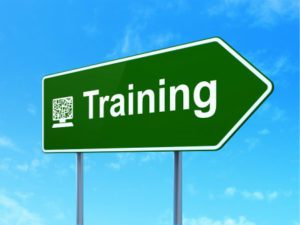Seizures might not look the way you’d expect. Would you know how to spot a seizure?
A seizure is a short change in normal brain activity that can cause changes in awareness, behavior, or body movement. Seizures are the main sign of epilepsy, a brain disorder that causes repeated seizures. Seizures can also be caused by other medical problems such as a high fever, low blood sugar, or drug or alcohol withdrawal. About 1 out of 10 people may have a seizure during their lifetime,1 which means seizures are common. It’s important to be able to recognize when a seizure is happening and know how to help.
Recognizing Seizures
Seizures might look different from what you’d expect. In the movies and on TV, a person supposedly having a seizure is often shown falling to the ground, shaking, and becoming unaware of what’s going on around them. That’s one kind of seizure, but it’s not the most common. More often, a person having a seizure may seem confused, stare into space, wander, make unusual movements, or be unable to answer questions or talk. Some people with seizures feel sensations such as a strange taste or smell or a “funny feeling” in their stomach.
Sometimes it can be hard to tell if someone is having a seizure. If you are concerned about your health or the health of a loved one, talk to a health care provider about any unusual symptoms.
New Terminology for Seizures
There are many different types of seizures, and people with epilepsy may have more than one type. You may have heard words such as “grand mal,” “petit mal,” or “partial” to describe different types of seizures. Those terms are now outdated. Doctors have changed the way they label seizures to provide better diagnoses and treatment. Seizures are now named by where they start in the brain, how they change awareness, and how they affect the body.
There are two main types of seizures:
- Generalized seizures affect both sides of the brain.
- Focal seizures start on one side of the brain.2
Both types of seizures can affect a person’s awareness.
Both generalized and focal seizures can cause a person to have physical movements, which doctors call “motor symptoms.” These symptoms might include muscle stiffening, relaxing, or twitching, or movements such as lip smacking. However, seizures can also cause non-motor symptoms, such as changes in thinking or sensation (without any visible effect on the body).
How to Help
Not all seizures are emergencies, and most will stop on their own within a few minutes. The first response is to remain calm and provide care and comfort. Time the seizure, and check for a medical identification bracelet or other emergency information. Learn more about seizure first aid and what you can do to help during a seizure.
More Information
Read more about epilepsy and find answers to common questions.
 CDC supports the Epilepsy Foundation to train school nurses and staff, child care workers, law enforcement, emergency responders, and older adult caregivers how to recognize seizures and provide first aid. Learn more.
CDC supports the Epilepsy Foundation to train school nurses and staff, child care workers, law enforcement, emergency responders, and older adult caregivers how to recognize seizures and provide first aid. Learn more.
References
1. Hauser WA, et al. Descriptive epidemiology of epilepsy: Contributions of population-based studies from Rochester, Minnesota. Mayo Clinic Proceedings. 1996;71(6):576-86.
2. Fisher RS, Cross JH, French JA, et al. Operational classification of seizure types by the International League Against Epilepsy: Position paper of the ILAE Commission for Classification and Terminology. Epilepsia. 2017;58:522-530.
Source: https://www.cdc.gov/epilepsy/communications/features/seizures.htm
